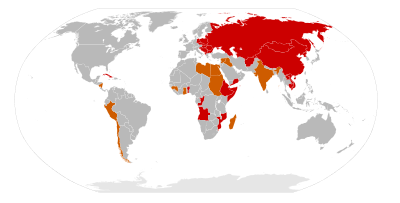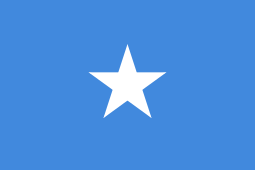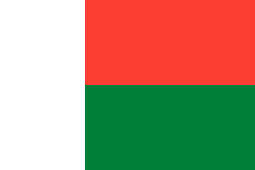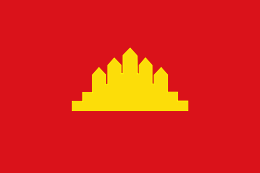Socialist-leaning countries

In the political terminology of the former Soviet Union, the socialist-leaning countries (Russian: Страны социалистической ориентации, countries of socialist orientation) were the post-colonial Third World countries which the Soviet Union recognized as adhering to the ideas of Socialism in the Marxist understanding. As a result, these countries received significant economic and military support.[1] In Soviet press these states were also called Russian: страны, идущие по пути строительства социализма, literally, "countries on the path of the construction of Socialism") Russian: страны, стоящие на пути социалиcтического развития, literally, "countries on the path of the socialist" development). All these terms meant to draw a distinction from the true Socialist states (in Marxist understanding).[2]
The use of the term was partly a result of a reassessment of national liberation movements in the Third World following World War II, widespread decolonization and the emergence of the Non-Aligned Movement, as well as Krushchev's Secret Speech to the 20th Congress of the CPSU and the "De-Stalinization" of Soviet Marxism.[3] The discussion of anti-colonial struggle at the Second Congress of the Comintern in 1920 had been formulated in terms of a debate between those for an alliance with the anti-imperialist national bourgeoisie (initially advocated by Lenin) and those for a pure class line of socialist, anti-feudal as well as anti-imperialist struggle (such as M. N. Roy). The revolutions of the post-war decolonization era (excepting those led by explicitly proletarian forces, such as the Vietnamese Revolution), e.g. the rise of Nasserism, were initially seen by many communists as a new form of bourgeois nationalism, and there were often sharp conflicts between nationalists and communists.[4] However, the adoption of leftist economic programs by many of these movements and governments, as well as the international alliances between the revolutionary nationalists and the Soviet Union, obliged communists to reassess their nature. Now, these movements were seen as neither classical bourgeois nationalists nor socialist per se, but rather offering the possibility of "non-capitalist development" as a path of "transition to socialism".[5]
At various times, these states included Algeria, Angola, Central African Republic, Mozambique, Egypt, India, Libya, Ethiopia, South Yemen, and many others.[1][2] As a major embarrassment to the Soviets, "Emperor" and alleged cannibal Jean-Bédel Bokassa of what had been (and later again became) the Central African Republic had at one time had declared his adherence to "scientific socialism"[6] in order to secure the free Soviet economic assistance.
In Soviet political science, "socialist orientation" was defined to be an initial period of the development in countries which rejected capitalism, but didn't yet have the prerequisites for the Socialist revolution or development. Along these lines, a more cautious synonym was used, "countries on the path of non-capitalist development". A 1986 Soviet reference book on Africa claimed that about 1/3 African states followed this path.[2]
In some countries designated "socialist-leaning" by the USSR, such as India, this formulation was sharply criticized by emerging Maoist or Chinese-leaning groups, such as the Communist Party of India (Marxist), who considered the doctrine class collaborationist, as part of the larger Sino-Soviet split and the Maoist struggle against so-called Soviet revisionism.
List of Socialist-leaning states
Some of these countries had communist governments, while others (italicized) did not.
-
 Egypt (1954–1973)
Egypt (1954–1973) -
 Syria (1955–1991)
Syria (1955–1991) -
.svg.png)
%3B_Flag_of_Syria_(1963-1972).svg.png) Iraq (1958–1963, 1968–1991)
Iraq (1958–1963, 1968–1991) -
 Guinea (1960–1978)
Guinea (1960–1978) -
 Mali (1960–1968)
Mali (1960–1968) -
 Algeria (1962–1991)
Algeria (1962–1991) -
 Somali Democratic Republic (1969–1977); in 1977, at the outbreak of the Somali invasion of Ethiopia, the Soviet Union ceased to support Somalia, with the corresponding change in rhetoric; Somalia broke diplomatic relations with the USSR, and the United States adopted Somalia as a Cold War ally.[7]
Somali Democratic Republic (1969–1977); in 1977, at the outbreak of the Somali invasion of Ethiopia, the Soviet Union ceased to support Somalia, with the corresponding change in rhetoric; Somalia broke diplomatic relations with the USSR, and the United States adopted Somalia as a Cold War ally.[7] -
.svg.png) Ghana (1964–1966)
Ghana (1964–1966) -
 Peru (1968–1975)
Peru (1968–1975) -
 Sudan (1968–1972)
Sudan (1968–1972) -
.svg.png) Libya (1969–1991)
Libya (1969–1991) -
 People's Republic of the Congo (1969–1991)
People's Republic of the Congo (1969–1991) -
 Chile (1970–1973)
Chile (1970–1973) -
 People's Democratic Republic of Yemen (1969–1990)
People's Democratic Republic of Yemen (1969–1990) -
 Uganda (1966–1971)
Uganda (1966–1971) -
 People's Republic of Bangladesh (1971–1975)
People's Republic of Bangladesh (1971–1975) -
 Madagascar (1972–1991)
Madagascar (1972–1991) -
.svg.png) People's Democratic Republic of Ethiopia (1974–1991)
People's Democratic Republic of Ethiopia (1974–1991) -
 Lao People's Democratic Republic (1975–1991)
Lao People's Democratic Republic (1975–1991) -
.svg.png) Benin People's Republic of Benin (1975–1979)
Benin People's Republic of Benin (1975–1979) -
.svg.png) People's Republic of Mozambique (1975–1990)
People's Republic of Mozambique (1975–1990) -
 People's Republic of Angola (1977–1991)
People's Republic of Angola (1977–1991) -
.svg.png) Democratic Republic of Afghanistan (1978–1991)
Democratic Republic of Afghanistan (1978–1991) -
 Grenada (1979–1983)
Grenada (1979–1983) -
 Nicaragua (1979–1990)
Nicaragua (1979–1990) -
 People's Republic of Kampuchea (1979–1989)
People's Republic of Kampuchea (1979–1989) -
 Indonesia (1960–1965)
Indonesia (1960–1965) -
 India (1950–1991)
India (1950–1991) -
 Burkina Faso (1983–1987)
Burkina Faso (1983–1987)
See also
References
- 1 2 Dmitri Trenin, “Post-Imperium: A Eurasian Story,” Carnegie Endowment for International Peace, 2011. p. 144
- 1 2 3 "СОЦИАЛИСТИЧЕСКАЯ ОРИЕНТАЦИЯ", An article from the 1986-1987 Soviet reference book "Африка. Энциклопедический справочник"
- ↑ Tareq, Ismael. The Communist Movement In the Arab World. London: Rutledge, 2005. Print. 24-25.
- ↑ ibid., 21
- ↑ ibid., 24
- ↑ Black History Month 2012: Emperor Bokassa’s Coronation
- ↑ Crockatt, Richard, The Fifty Years War: The United States and the Soviet Union in World Politics. London & New York, NY: Routledge. 1995, ISBN 978-0-415-10471-5